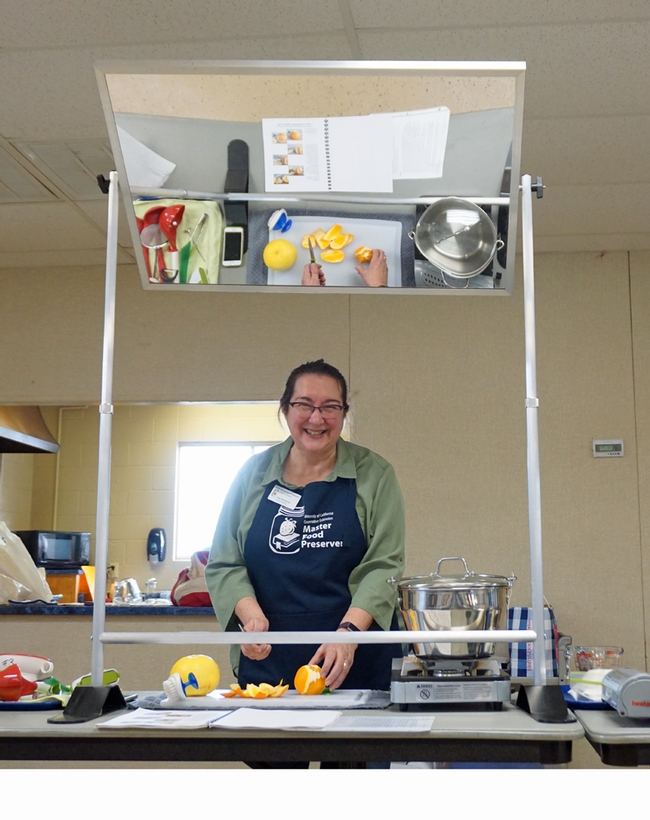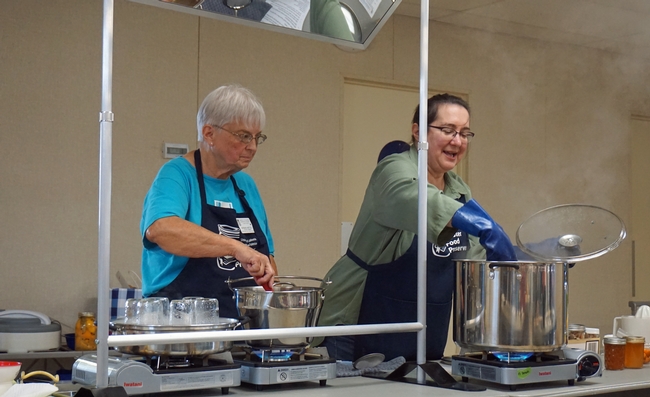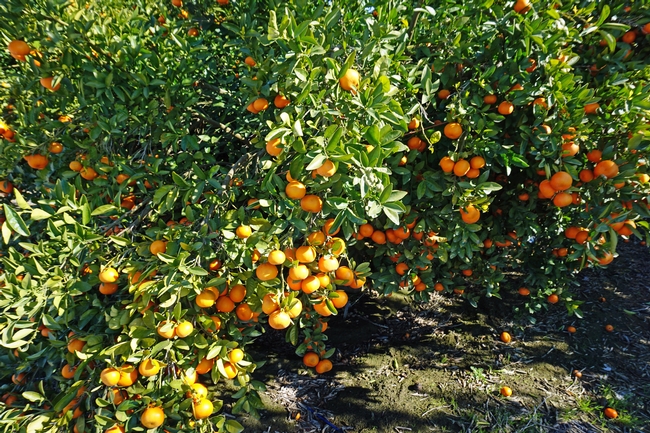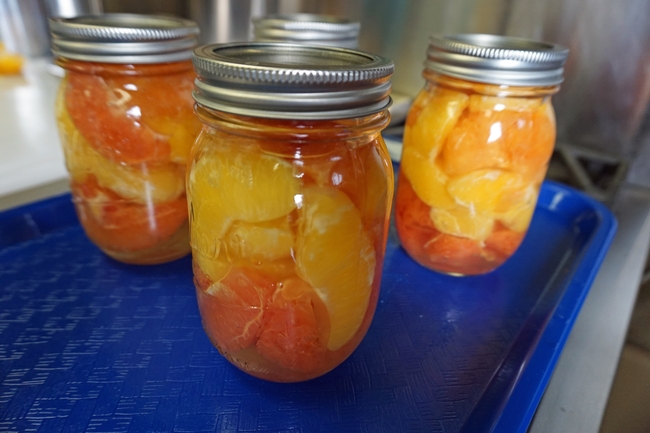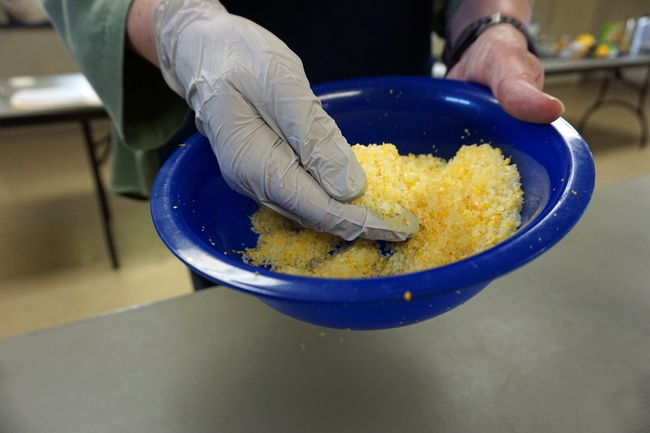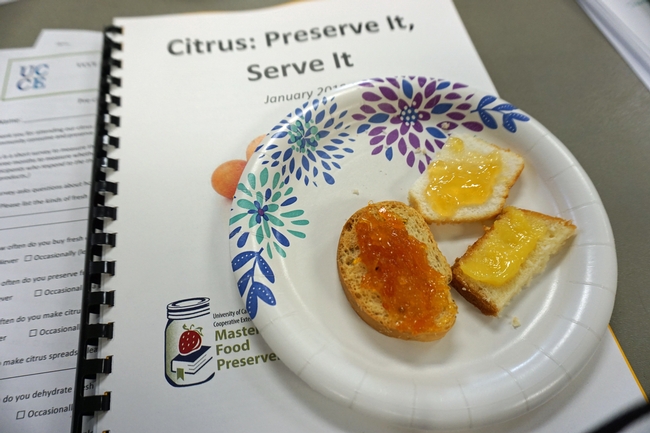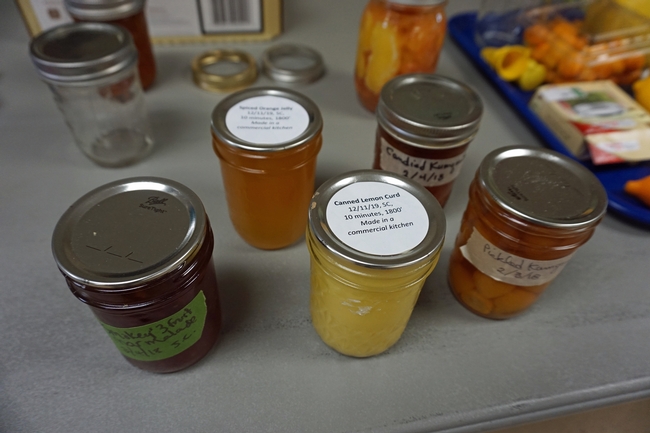Update: 2020 classes will be held as follows. For more information and registration, click here for a calendar and scroll down to the preferred class.
|
Date |
City |
Time |
Location |
|---|---|---|---|
|
Fairfield |
1-4pm |
UCCE Solano County Meeting Room 501 Texas Street. Fairfield, |
|
|
Napa |
1–4pm |
UCCE Napa County, 1710 Soscol Avenue, Suite 4, Napa |
|
|
Chico |
1–4pm |
Chico Masonic Family Center, 1110 W. East Avenue, Chico |
|
|
Yuba City |
1–4pm |
UCCE Yuba/Sutter County Conference room 142A Garden Highway, Yuba City |
|
|
Grass Valley |
1–4pm |
Grass Valley Veterans Building 255 South Auburn, Grass Valley |
|
|
Berkeley |
1-4pm |
The Green Church, 2108 Russell Street, Berkeley |
|
|
Concord |
1–4pm |
Contra Costa Farm Bureau |
Winter is the time when many backyard citrus trees and roadside fruit stands are laden with mandarins, lemons, navel oranges and limes. A UC Cooperative Extension expert is traveling the state to teach how the fresh taste of citrus can be preserved for year-round enjoyment.
UC Cooperative Extension Master Food Preserver coordinator Sue Mosbacher recently taught a roomful of attentive Mariposa County residents how to safely make marmalade jam, preserve lemons in salt to add flavor to savory dishes, and can grapefruit and orange sections with a little sugar to produce a fresh-tasting citrus cocktail high in vitamin C.
Mosbacher is a community education specialist based in El Dorado and Sacramento counties. But she has been driving up and down Highway 99 to bring research-based food preservation lessons to residents as far south as Madera County as part of a special project that was funded with a $140,000 grant from the U.S. Department of Agriculture's (USDA) Agricultural Marketing Service. (Through grant AM170100XXXXG011. The project's contents are solely the responsibility of the authors and do not necessarily represent the official views of the USDA.)
Mosbacher has made dozens of appearances at county fairs and community meetings.
“It's been fabulous,” Mosbacher said. “People want the information and are using what they are learning.”
The series began last year with lessons focused on preserving summer fruit. The citrus classes are being offered in the winter. And in late spring 2019, Mosbacher will be on the road again to teach more fruit preservation classes and, in summer and fall of 2019, she will offer vegetable preservation lessons. The project is slated to conclude in 2020.
Mosbacher said she is energized for this journey by knowing that she is making a difference in California communities. She shared a telling story from a Georgetown vegetable preservation class. A participant said she had canned peas using the boiling water method; the Master Food Preserver Program guidelines require the use of a pressure canner for low-acid vegetables to prevent the growth of bacteria that produce the botulism toxin.
“She said she always canned peas in a water bath, and no one had ever died. But she came back the next week and told us she decided not to risk it and to throw the veggies to her chickens,” Mosbacher said. “And the next day, half her chickens died.”
Mosbacher has a background in computer science and the financial industry. During the 2008 downturn, she was laid off and spent time as a 4-H volunteer in the UC Cooperative Extension Office. While there, she learned about a part-time job opportunity working with UC Master Gardeners and UC Master Food Preservers.
At the time, she had no food preservation experience, so she took Master Food Preserver training.
“I learned everything I know from our own Master Food Preservers,” Mosbacher said.
Master Food Preservers are volunteer food preservation enthusiasts who have been trained in research-based preservation methods. Every food preserver training begins with a food safety primer with proven methods to decontaminate kitchen surfaces and tools, detoxify canned low-acid food and guard against spoilage.
At the citrus training, Mosbacher demonstrated canning a delicious orange jelly spiced with cinnamon, allspice and cloves. After cooking the juice with sugar and pectin, she canned the jelly using the boiling water method and with a steam canner. Either option is okay with high-acid citrus fruit.
Options for preserving lemons abounded. The juice can be frozen in an egg carton or ice cube tray, and used throughout the year in salad dressings, fruit salads, soups and ice cream. Slices of lemon can be dried to flavor ice water, seafood and casseroles. Mosbacher demonstrated preserving lemon wedges in salt water seasoned with bay leaves, cinnamon sticks and whole black peppercorns. She provided a recipe for a gourmet chicken tagine and roasted fingerling potatoes with preserved lemons to give participants guidance for using their preserved fruit.
At all the classes, participants are surveyed at the beginning and end to document the impact of the training. The preliminary results calculated with responses from 75 participants reflect positive results. After the class, nearly half of participants intended to preserve more fruit at home than they previously preserved. Two-thirds of participants intended to dehydrate more fruit than before.
"The results are great," said Katie Johnson, UC Cooperative Extension nutrition, family and consumer sciences advisor in the Central Sierra. "We never see results this high with regard to health behaviors, so I think it's pretty exciting."
To learn about food preservation programs around the state and search for classes, visit the UC Master Food Preserver website.
